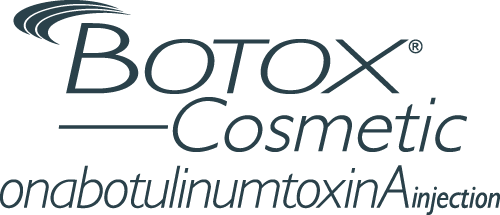Chemical peels have become a cornerstone in modern skincare treatments, known for their ability to rejuvenate the skin, reduce fine lines, and combat stubborn acne. In this article, we’ll dive into the often-underestimated healing process, breaking down the recovery timeline based on different peel types and offering expert tips on how to care for your skin to minimize downtime and maximize the benefits of your treatment.
What Happens During a Chemical Peel?
A chemical peel involves applying a specially formulated chemical solution to the skin that exfoliates and removes the outermost layers, revealing smoother and more youthful skin beneath. Depending on the type of peel, a range of solutions such as alpha hydroxy acids (AHAs) for light peels, trichloroacetic acid (TCA) for medium-depth peels, or phenol for deep peels can be used. The treatment works by encouraging cell turnover and stimulating collagen production, which can improve the appearance of fine lines, wrinkles, acne scars, and hyperpigmentation.
During the procedure, you may feel a slight tingling or stinging sensation as the chemical solution is applied. The intensity of the sensation and the peel’s effects can vary based on the depth of the treatment. While a light peel may cause minimal discomfort and require little downtime, deeper peels may lead to redness, flaking, and longer healing times. The peel works by sloughing off damaged skin cells, but the process requires adequate aftercare to achieve optimal results.
The Chemical Peel Recovery Process: What to Expect
The recovery process following a chemical peel can vary significantly based on the type and depth of the treatment. After a light peel, most individuals experience mild redness and peeling for a few days, resembling a sunburn. This typically subsides within 3-5 days, and normal activities can usually be resumed after this short recovery period.
For medium-depth peels, you may experience more noticeable redness and peeling, which can last up to a week. The skin may feel tight and uncomfortable, requiring careful moisturizing and sun protection to avoid further irritation.
In the case of deep chemical peels, the recovery process is more involved. Expect significant peeling, swelling, and discomfort that can last 7-14 days. During this time, the skin will be highly sensitive, and you may need to limit activities that cause sweating or exposure to harsh environments. Healing speeds up with proper aftercare, including hydration and avoiding sun exposure, but the results are typically more dramatic and long-lasting.
How Long Does It Really Take for a Chemical Peel to Heal?
Healing Time for Light Chemical Peels
For light chemical peels, the healing process is generally quick. These peels primarily target the outermost layer of skin, causing minimal disruption. Patients usually experience slight redness and flakiness within the first few days. The skin begins to peel as the dead skin cells slough off, revealing fresh skin underneath. For most people, the healing period for a light peel is around 3 to 5 days, with the skin looking healthier and more radiant once the peeling has finished. Daily activities can typically be resumed almost immediately, but it is important to follow proper aftercare instructions, including avoiding sun exposure and using gentle skincare products.
Healing Time for Medium Chemical Peels
Medium chemical peels penetrate deeper into the skin, targeting both the outer and middle layers. Recovery time for these peels is longer than for light ones, typically lasting around 7 to 10 days. During this time, patients will experience visible peeling, swelling, and redness, which may make them feel self-conscious. The healing process is more intense, and post-peel care, including moisturizing and applying sunscreen, is critical for achieving the best results. Depending on your skin’s sensitivity and response to the treatment, you may also need to limit physical activity and avoid direct sunlight for at least a week.
Healing Time for Deep Chemical Peels
Deep chemical peels are the most intensive treatment, often used to address severe skin concerns like deep wrinkles or significant sun damage. The recovery time for these peels can take 2 to 3 weeks, with the most noticeable peeling occurring during the first week. During this time, patients may experience discomfort, redness, and scabbing as the skin heals. Since these peels affect deeper layers of the skin, following the doctor’s instructions during the recovery period is vital to prevent complications.
How to Speed Up Chemical Peel Healing: Tips and Tricks
- Hydrate Properly: Keeping your skin well-hydrated speeds up recovery. Use a fragrance-free moisturizer to prevent dryness and irritation while allowing the skin to regenerate more efficiently.
- Avoid Scratching or Picking: As tempting as it may be, resist the urge to peel or scratch off flaking skin. Let the skin naturally exfoliate to prevent scarring and speed up healing.
- Use Gentle Cleansers: Opt for mild, non-abrasive cleansers to wash your face. Harsh soaps can disrupt the healing process and irritate sensitive skin.
- Apply Aloe Vera: Known for its soothing properties, aloe vera gel can reduce inflammation and redness, speeding up the recovery process.
- Stay Out of the Sun: UV exposure can hinder healing and cause pigmentation changes. Always use a broad-spectrum sunscreen with SPF 30 or higher, even on cloudy days.
- Consider Antioxidants: Skincare products with antioxidants, like vitamin C, can promote skin repair and collagen production, helping your skin heal faster and look brighter.
- Get Adequate Sleep: Healing occurs during rest. Ensure you’re getting enough sleep to support your skin’s recovery process.
Common Questions About Chemical Peel Healing
One common question patients often ask is, “How soon can I wear makeup after a chemical peel?” While it’s tempting to cover up the peeling skin, it’s best to wait until the skin has fully healed, which typically takes about 7-10 days. Applying makeup too soon can irritate the skin and prolong the healing process.
Another frequent concern is whether scarring is a risk. Scarring is rare if you follow the aftercare instructions, including avoiding sun exposure and refraining from picking at the peeling skin. Mild redness after a chemical peel is normal, and it usually fades within a few hours to a few days, depending on the type of peel used.
Many people wonder if they can resume exercise after the procedure. It’s recommended to avoid intense physical activity for at least 48 hours, as sweating can irritate the skin and hinder the healing process. Lastly, if you experience unusual symptoms such as excessive pain, swelling, or discharge, it’s important to contact your dermatologist. These may indicate an infection, requiring professional attention.
Conclusion
Chemical peels offer a transformative way to rejuvenate your skin, but understanding the healing process is key to achieving the best results. By following the recommended aftercare steps and being patient with your skin’s natural recovery, you can ensure optimal healing and vibrant skin. If you’re considering a chemical peel or have questions about the recovery process, don’t hesitate to reach out for expert guidance. At Derrow Dermatology, we’re here to help you navigate your skincare journey with personalized care and attention.
Call us at (407) 389-2020 or visit us today to schedule an appointment and learn how a chemical peel can enhance your skin’s health and appearance.











